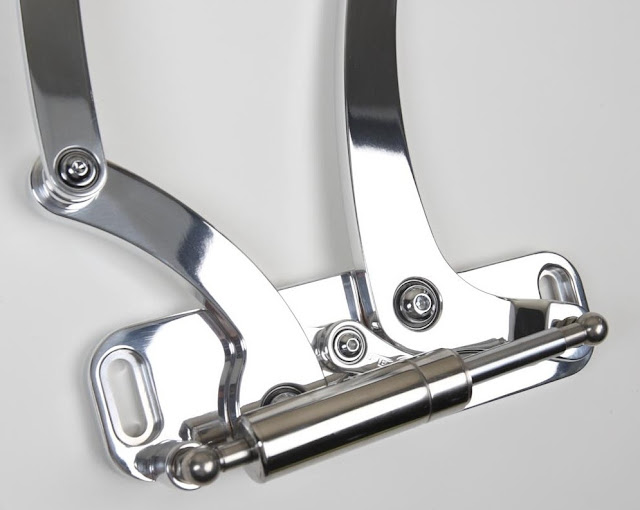What goes in to making a new billet
aluminum part at Fesler Billet? How is the decision made to produce some parts
for some cars over other parts for other cars? Let’s take a look at the
decision-making process.
Fesler Built has been designing
custom parts for the cars it builds for a several years now. Investing in the
tools and personnel to make those parts available to the public has been a
viable outlet for the company. When the economy tanked in 2008 people weren’t looking
to build as many six-figure custom cars but they were looking for a good deal
on great parts for the cars they had already.
So, Fesler Billet was created to
focus on making more parts for more cars. Judging how many cars of a particular
model and year are still on the road, which ones are popular with DIY modifiers
and restorers, as well as which parts those individuals are interested in,
allowed Fesler to shrewdly produce parts that would fly off the shelves and
look great on show cars and personal vehicles alike around the country and the
world.
Whereas Fesler used to take a car
that happened to come into the shop and try to design many different parts for
it, it has become just as useful to ask for suggestions from the public.
Clients suggest a part and are asked to send one in for examination. In return,
if the part it produced, they will receive a free production part when it is
complete.
However, what the public should
understand is that the next part of the process can take a great deal of time,
even years. Researching the market for a potential product, producing a unique
design for the Fesler Billet brand, prototyping and testing samples and then
mass testing with a network of people who own the vehicle in question can all
take a very long time. The development process alone can take weeks. Fesler
employs an engineer full-time to develop and improve part designs.
And that’s not even touching the cost. Developing a part can run into the tens of thousands of dollars and, at the end, there’s only a gamble (well researched, albeit) that the part will sell well. Then, when a new part is produced, it only raises the chances that competitors will design their own part or even reintroduce a previously retired design for the part.
And that’s not even touching the cost. Developing a part can run into the tens of thousands of dollars and, at the end, there’s only a gamble (well researched, albeit) that the part will sell well. Then, when a new part is produced, it only raises the chances that competitors will design their own part or even reintroduce a previously retired design for the part.
That’s why Carrie Fesler says every
time she sees a new hood hinge that looks suspiciously like a Fesler hinge, she
laughs. With as many as 36, small, time-consuming parts to make for some
applications, hood hinges demand a higher investment, in daily production as
well as initial development, relative to other, single-piece parts. Those who
want to make a quick buck on their own hinges, she says, are more than welcome
to try.
So, next time you see a new Fesler
part in the store or in posts from SEMA, keep in mind how much effort goes into
bringing that part to market.



No comments:
Post a Comment